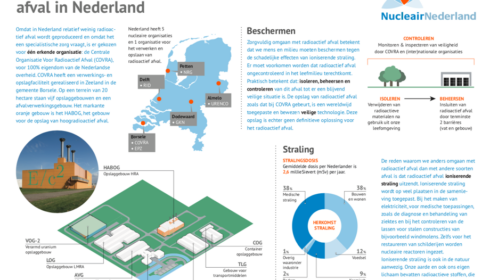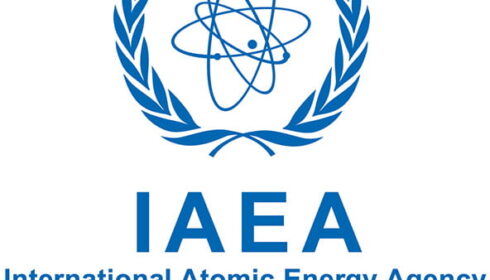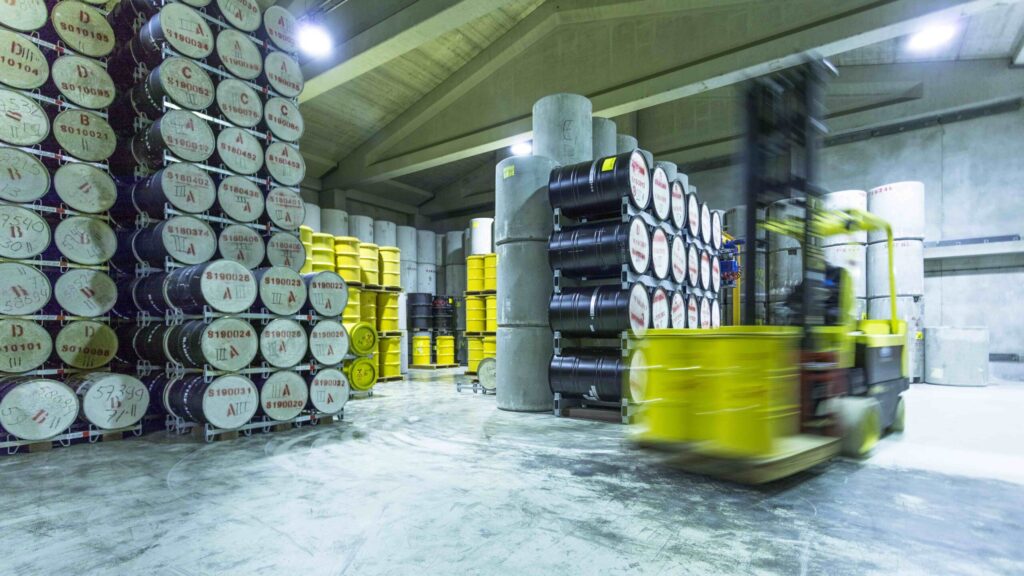
Central Organization For Radioactive Waste (COVRA)
Because relatively little radioactive waste is produced in the Netherlands and because of the specialized knowledge required, a single specialized organization was chosen in 1982 to manage all the waste at one central location in the Netherlands: the Central Organization for Radioactive Waste (COVRA), based in Nieuwdorp, Zeeland.
COVRA takes ongoing care of Dutch radioactive waste to protect people and the environment. All radioactive waste is safely stored by COVRA for at least one hundred years in specially designed buildings. The waste is isolated at a central location where it can be controlled and monitored, ensuring safety over that long period. Eventually, the waste must be placed in a final disposal facility. This ensures that the waste will still be out of human life space thousands of years from now.
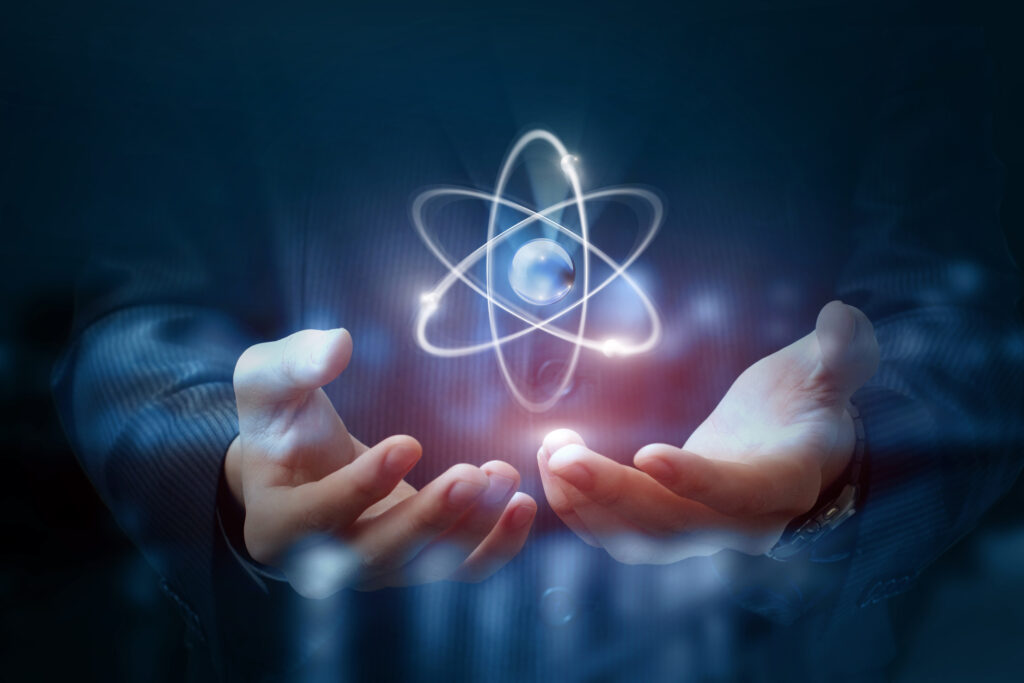
Radioactive decay
The basis of radioactive waste management is decay: over time, radioactive waste becomes harmless. Sometimes waste is harmless within seconds; other types take thousands of years.
When radioactive substances emit their radiation, they eventually turn into a substance that is no longer radioactive. We call this “decay,” and it is a normal physical process. The unstable elements search for a new equilibrium. When they reach that equilibrium, the radioactive substance has become stable and no longer emits radiation. So eventually a substance arises by itself that has lost all its radiation and thus no longer poses any danger. How long this takes is expressed as the half-life. This is the time it takes to lose half of the radioactivity each time. After two half-life periods, the radioactivity is half of half. So that’s a quarter of the initial value. Each radioactive substance has its own fixed half-life. One radioactive substance is harmless as soon as it is created. Other radioactive material must be stored for many thousands of years before it stops radiating.
image iStockphoto ©Natali_mis
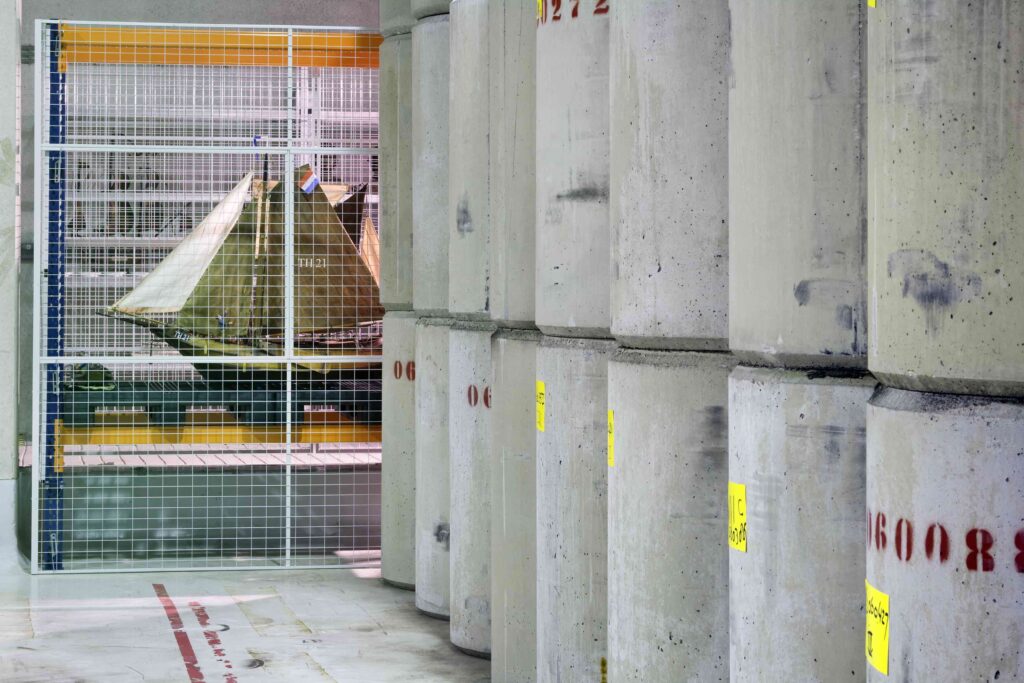
Types of waste
Radioactive waste management distinguishes between two types of waste:
- Low and intermediate level waste.
- Highly radioactive waste.
Low and medium level waste
Low and medium level waste (LMRA) includes medical consumables (gloves, clothing, hypodermic needles and laboratory glassware), smoke detectors and reactor components (tubes, pumps and filters). About 34,000 m³ of LMRA is currently stored at COVRA. This would fill 1/20 of a large container ship. Every year about 1,100 m³ of LMRA is added. That is comparable to the contents of about 16 shipping containers.
LMRA can be solid or liquid. Combustible or non-combustible, compressible or noncompressible. Each type of waste deserves specific treatment so that it can then be stored as safely as possible. For low- and medium-level waste, a concrete enclosure is sufficient to contain the radioactive materials and reduce radiation. It stands to decay in ordinary storage buildings.
A special category is NORM waste. NORM stands for “Naturally Occurring Radioactive Material.” This is waste with natural radioactivity: for example, depleted uranium and radioactive substances brought to the surface during oil and gas extraction.
Highly radioactive waste
Highly radioactive waste consists of the recycling waste of nuclear fuel from the Borssele nuclear power plant and fuel elements and waste from the production of medical isotopes in the research reactors in Petten and Delft. About 110 m³ of HRA is currently stored at COVRA. This is comparable to the contents of one and a half shipping containers. An average of 4.5 m³ of HRA is added annually.
Because of the high radiation level, the HRA must be processed with remote-controlled installations and stored behind thick concrete walls. This takes place in the HABOG: a large bright orange bunker with 1.70-meter-thick walls, which can withstand natural disasters (earthquakes and floods) and man-made calamities (transport accidents and explosions). HABOG stands for Highly Active Waste Treatment and Storage Building.
The HRA that produces heat is mixed into liquid glass and poured into a stainless steel container where it solidifies into a basaltic material. The radioactivity is then trapped in the molecular structure of the glass from which it cannot escape. Over the next hundred years, this waste loses its heat and most of its radioactivity, after which the waste is easier to handle. Non-heat-producing HRA is stored without a glass mixture in stainless steel containers.
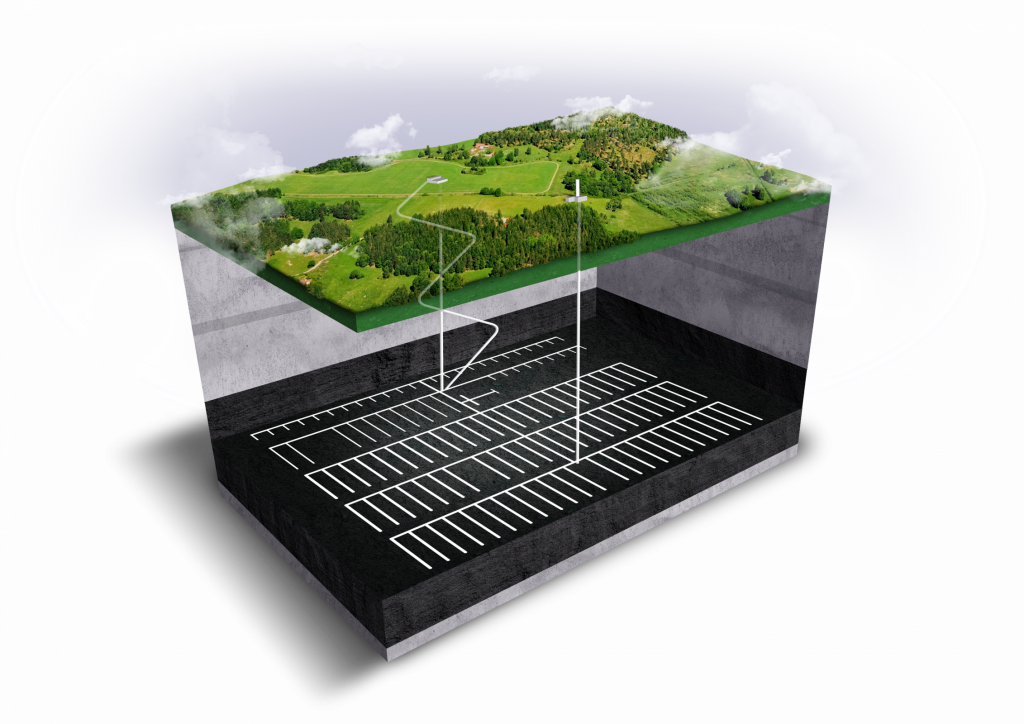
Final disposal
The storage of radioactive waste as it is done at COVRA is a globally applied and proven safe technology. However, this storage of radioactive waste is not a final, long-term solution for the radioactive waste. After 100 years of storage, some of the waste is still radioactive. This long-lived waste is best disposed of in the deep underground. We call this final disposal.
In a stable underground layer of earth, for example, clay, salt or granite, a specially designed repository is made, in which the waste is stored. Over time, this repository is hermetically sealed. Final disposal is the only solution according to the current state of science and technology, which ensures that the waste remains outside of human life space even after thousands of years. Coordinating research into final disposal is one of COVRA’s core tasks.
Other countries are also researching final disposal options. In Europe, no underground final repository for long-lived high-level radioactive waste is currently in operation. However, experiments are taking place in underground test laboratories to investigate final disposal in geologically stable layers. Finland, Sweden and France are working on concrete projects to realize final disposal facilities. These will be the first countries to commission a national final repository for high-level radioactive waste. It is expected that the first final disposal of highly radioactive waste in Europe will take place around 2025. Deep underground disposal in salt for all military radioactive waste has already been in operation in the United States since 1999.
Research into final disposal of radioactive waste is not only looking at the possibilities in the Netherlands, but also at the possibilities of final disposal in a multinational context. A decision on final disposal is expected to be made in the Netherlands around 2100.
Image: Artist impression of final disposal in the Netherlands

